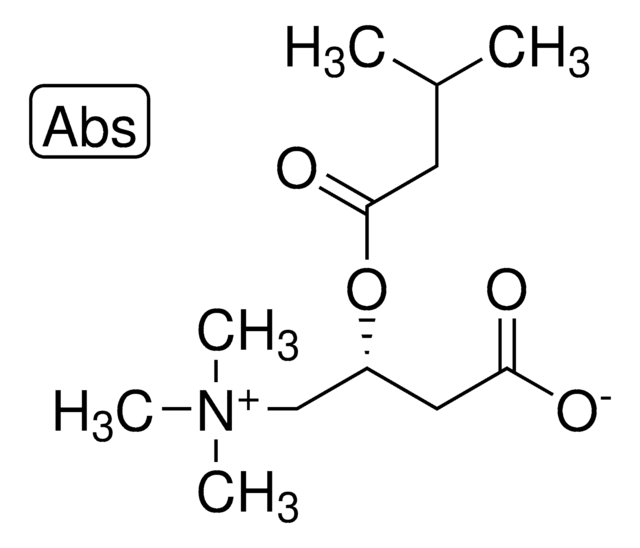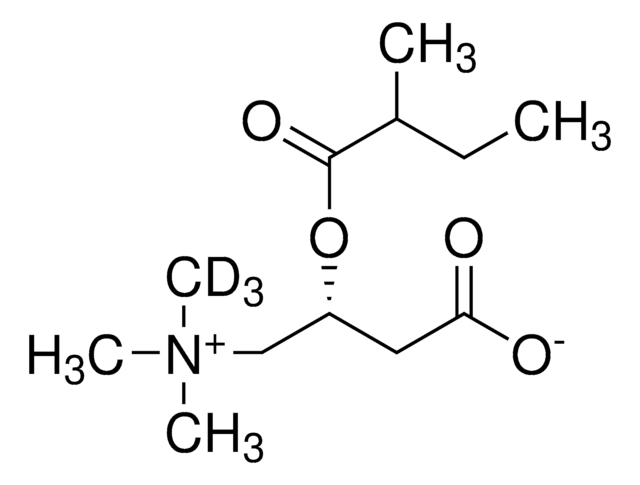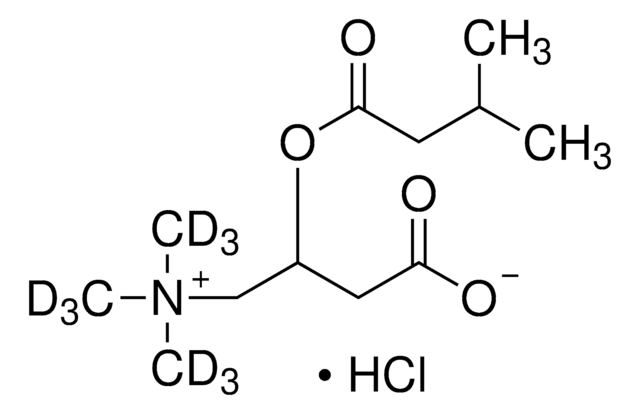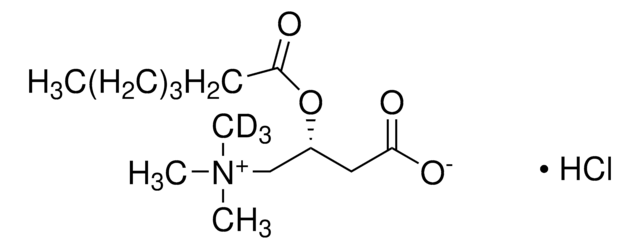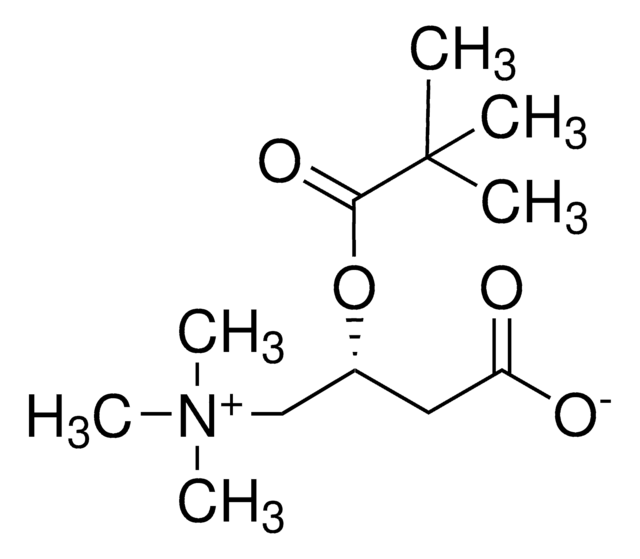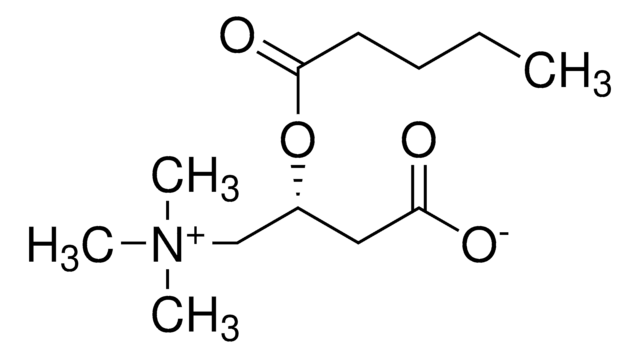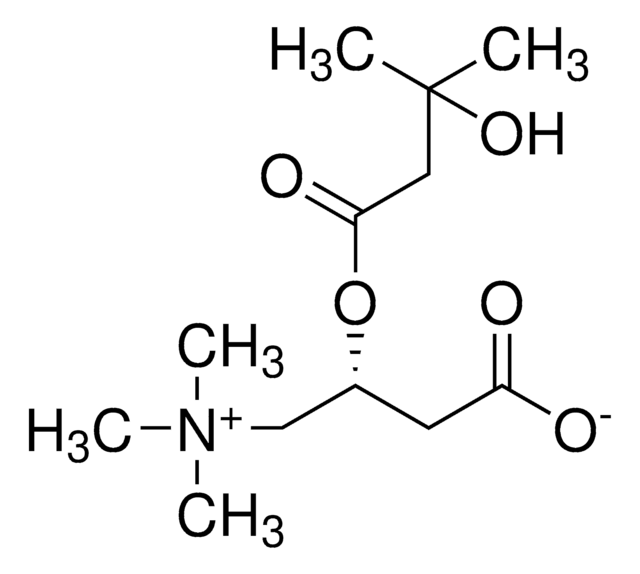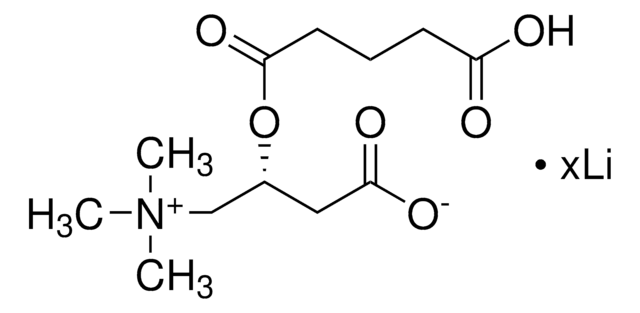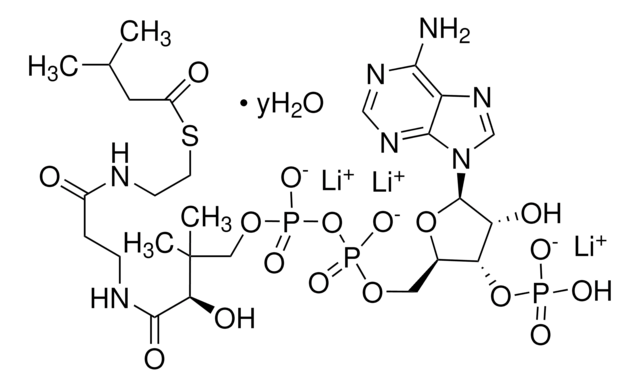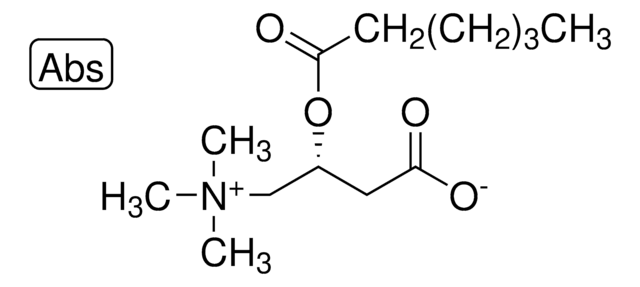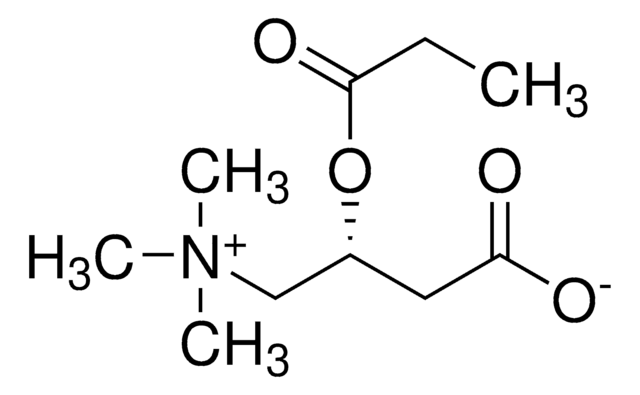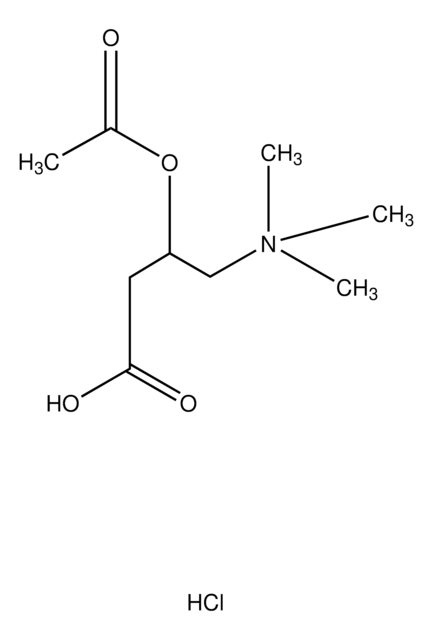Kluczowe dokumenty
50405
2-Methylbutyryl-L-carnitine
≥97.0% (HPLC)
Synonim(y):
(2R)-3-Carboxy-N,N,N-trimethyl-2-(2-methyl-1-oxobutoxy)-1-propanaminium inner salt
About This Item
Polecane produkty
Nazwa produktu
2-Methylbutyryl-L-carnitine, ≥97.0% (HPLC)
Poziom jakości
Próba
≥97.0% (HPLC)
Formularz
powder or crystals
aktywność optyczna
[α]/D -20±2°, c = 0.1 in H2O
zanieczyszczenia
≤10% water
kolor
white to off-white
temp. przechowywania
2-8°C
ciąg SMILES
C[N+](C)(C)C[C@H](OC(C(CC)C)=O)CC([O-])=O
InChI
1S/C12H23NO4/c1-6-9(2)12(16)17-10(7-11(14)15)8-13(3,4)5/h9-10H,6-8H2,1-5H3/t9?,10-/m1/s1
Klucz InChI
IHCPDBBYTYJYIL-QVDQXJPCSA-N
Szukasz podobnych produktów? Odwiedź Przewodnik dotyczący porównywania produktów
Powiązane kategorie
Działania biochem./fizjol.
Kod klasy składowania
11 - Combustible Solids
Klasa zagrożenia wodnego (WGK)
WGK 3
Temperatura zapłonu (°F)
Not applicable
Temperatura zapłonu (°C)
Not applicable
Wybierz jedną z najnowszych wersji:
Certyfikaty analizy (CoA)
Nie widzisz odpowiedniej wersji?
Jeśli potrzebujesz konkretnej wersji, możesz wyszukać konkretny certyfikat według numeru partii lub serii.
Masz już ten produkt?
Dokumenty związane z niedawno zakupionymi produktami zostały zamieszczone w Bibliotece dokumentów.
Klienci oglądali również te produkty
Nasz zespół naukowców ma doświadczenie we wszystkich obszarach badań, w tym w naukach przyrodniczych, materiałoznawstwie, syntezie chemicznej, chromatografii, analityce i wielu innych dziedzinach.
Skontaktuj się z zespołem ds. pomocy technicznej